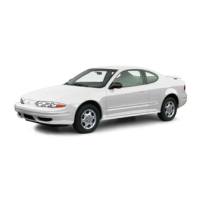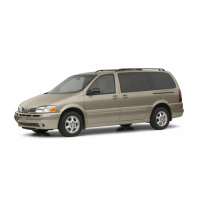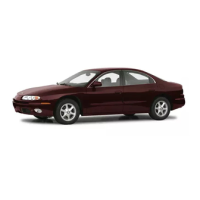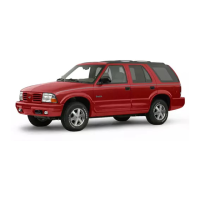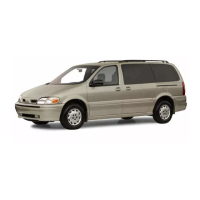belt
position
are
essential
to
lessen
the
chance
of
injury
in
the
event
of
an
accident
because
this
spreads
the
force
exerted
by
the
lap
belt
in
a
collision
over
the
strong
hip
bone
structure
rather
than
across
the
soft
abdominal
area.
To
lessen
the
chance
of
injury
in
the
event
of
an
accident
never
use
the
same
belt
for
more
than
one
person
at
a
time;
avoid
wearing
belts
in
a
twisted
condition;
and
do
not
allow
belts
or
hardware
to
become
pinched
between
the
seat
structural
(metallic)
members
or
in
the
door.
Seat belt buckles are located close
to
the
seat
to
provide shoulder belt attaching
points
that
reduce
the
tendency of
shoulder belts
to
pull
the
lap belt upward
into
the
soft abdominal area in
the
event
of
frontal impact.
• The
front
seat shou Ider belts
in
this
vehicle are equipped with a
"vehicle
sensitive
retractor"
which
is
designed
to
grip
the
belt only during a sudden
stop
or impact.
At
other
times it
is
designed
to
move freely with
the
occupant,
regardless of
occupant
movement.
• After buckling,
any
excess slack in
shoulder belt should be removed
by
pushing belt toward guide loop on head
restraint.
• A
comfort
clip
is
provided
to
reduce
possible discomfort caused
by
the
tension of
the
shoulder belt. To adjust,
pull on
the
shoulder belt
to
provide
the
desired
amount
of slack,
then
push
the
comfort
clip
on
the
shou Ider belt snugly
against
the
guide loop. HOWEVER,
the
clip should
not
be
adjusted so it provides
more
than
four inches slack (width of a
fist) between
the
shoulder belt
and
your
chest; excessive clearance would reduce
restraint system effectiveness.
• To unfasten belts, depress push
button
in
center of .buckle.
• When no longer
in
use,
front
seat
lap-shoulder belts can be stowed
b.y
allowing
them
to
rewind into their
retractors. The
comfort
clip can be
a djusted when removing
belts, so
shou.lder belt slack will be fully
taken
up
by
retractor.
NOTE: Take care
not
to
let
the
"lap"
portion
of
the
belt
twist while
it
is being
rewound
into
the
retractor. The
bulk
of
the
twisted
belt
may
cause the retractor
to
jam so
it
will
not
rewind further, while
at
the
same
time
the retractor locking mechanism
may
prevent the
belt
from being withdrawn.
To
relea:;e
a
jammed
belt, open the cover on the
rear
of
the retractor
and
rotate
the
key
slot
while
pulling
the
.
belt
upward (see
illustration). This should allow the
belt
to be
untwisted.
If
for some reason the
lap
belt
9

